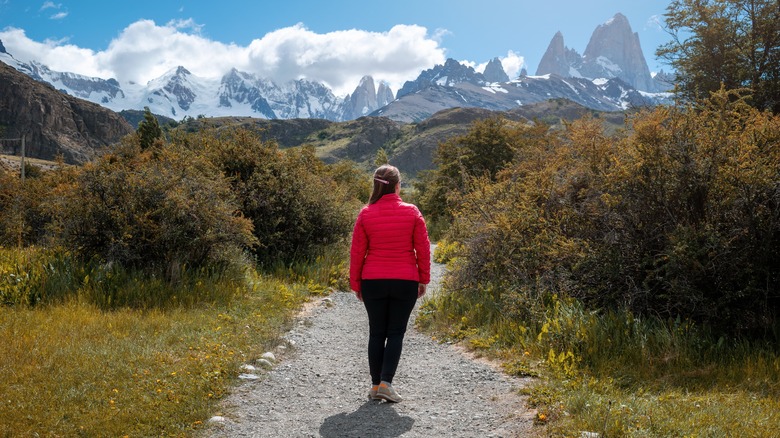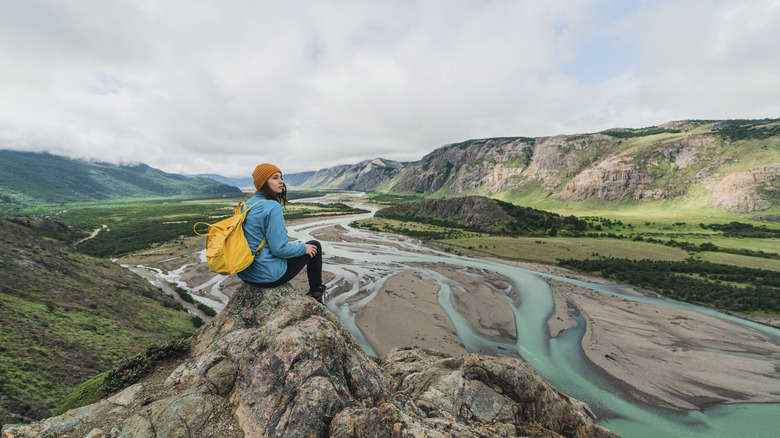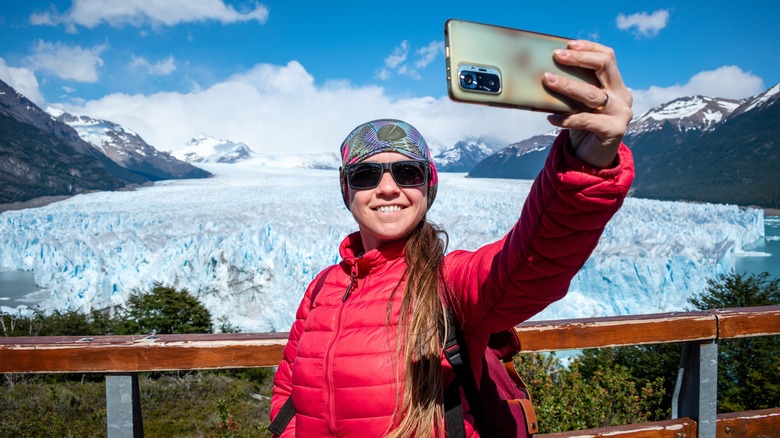The Type Of Clothing You Should Avoid Packing On A Trip To Patagonia
Covering roughly 260,000 square miles along the southern tip of South America across both Chile and Argentina, Patagonia is a dream destination for nature lovers and adventure enthusiasts alike. Known for its dramatic landscapes and stunning glacier views that will take your breath away, the remote destination offers a special blend of natural beauty and outdoor activities that beckons millions of visitors every year. From the towering peaks of the Andes Mountains to the pristine glaciers of Torres del Paine National Park, the region promises to deliver in terms of everything from wildlife encounters to awe-inspiring vistas and thrilling hiking trails.
That said, when it comes to planning your trip, knowing what is the best and safest gear to pack for your hiking adventure in Patagonia can make the difference between the journey of a lifetime and a pretty miserable experience. After all, besides its well-documented natural beauty, the remote destination's unpredictable weather — which can shift from sunny and mild to windy and rainy in a matter of minutes — is also well-known for catching unprepared travelers off guard.
One of the biggest mistakes travelers make when packing their clothes is reaching for the wrong materials. Specifically, we're talking about cotton. Because even though your favorite cotton T-shirt (or even pair of jeans) might feel like the perfect pick for everyday wear, they're far from ideal for dealing with Patagonia's ever-changing climate.
Why cotton isn't Patagonia-proof
Patagonia's notoriously fickle weather patterns can change in the blink of an eye. With clear skies quickly giving way to sudden downpours or chilly winds, the region's climate is highly volatile — one of the main reasons Patagonia is considered a dangerous destination for hikers and explorers.
Plus, aside from posing potential safety risks, this unpredictability also makes your choice of clothing crucial in terms of both comfort and safety. So, what's the problem with cotton? Put simply, cotton fabrics absorb moisture easily and also take forever to dry. This ultimately means that, if you get caught in a sudden rain shower or work up a sweat on a hike, you could easily end up cold, damp, and uncomfortable for hours.
Instead, experts suggest choosing fabrics like merino wool and synthetic materials — both of which are much more suitable for any and all Patagonian adventures. For starters, merino wool is naturally moisture-wicking, breathable, and odor-resistant. This means it can keep you dry and fresh even during intense activities or sudden weather changes. Meanwhile, synthetic fabrics — think polyester and nylon — are typically quick-drying, lightweight, and durable. As such, they can withstand the challenges of outdoor activities while keeping you comfortable at the same time.
Other Patagonia packing tips
Even though choosing the right fabrics is crucial for a great Patagonian adventure, there are a few more packing tips and strategies to keep in mind. For starters, when it comes to clothing, layering is key. Make sure to pack a mix of base layers, insulating mid-layers, and waterproof outer layers — that way, you can easily adjust your clothing (and comfort level) as temperature conditions shift throughout the day. As for footwear, invest in a good pair of waterproof hiking boots with ankle support to tackle the terrain.
Along with proper clothing, it's also important that you don't underestimate the power of the sun — even on cloudy days. UV rays get pretty intense in Patagonia, so packing a wide-brimmed hat, sunglasses, lip protectant, and high-SPF sunscreen is also essential. For day trips, a small, waterproof backpack where you can keep snacks and emergency supplies handy is also a must — just don't overpack unless you want to be weighed down on the trails.
Lastly, staying hydrated is equally important, so don't forget to pack a reusable water bottle to bring along on your hikes. In terms of quality, Patagonia's water is generally safe to drink directly from the tap, so there's no need to worry about purification tablets or filters. Plus, filling up your water bottle from one of the many streams you'll encounter during your hike makes for a pretty refreshing experience, too!


